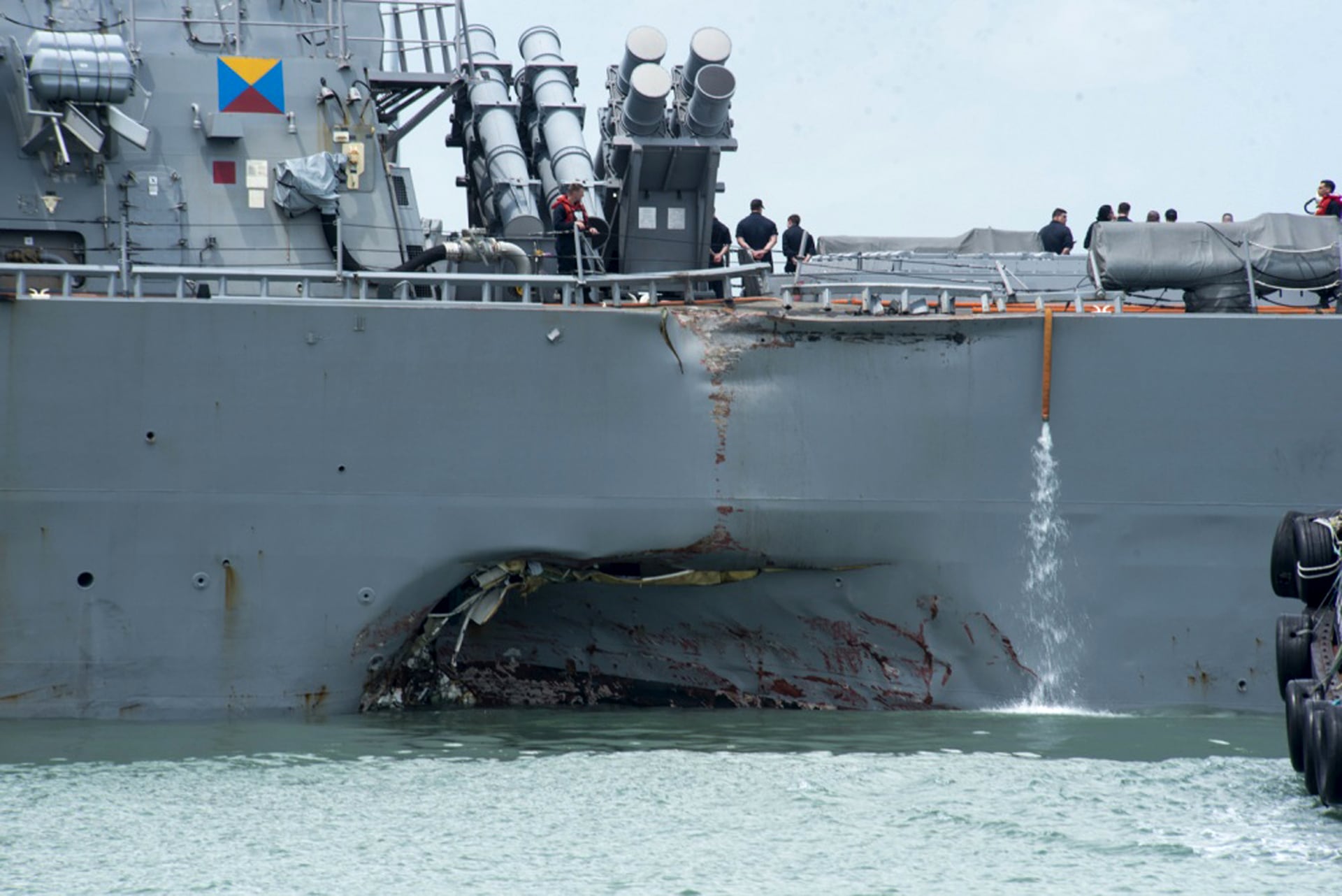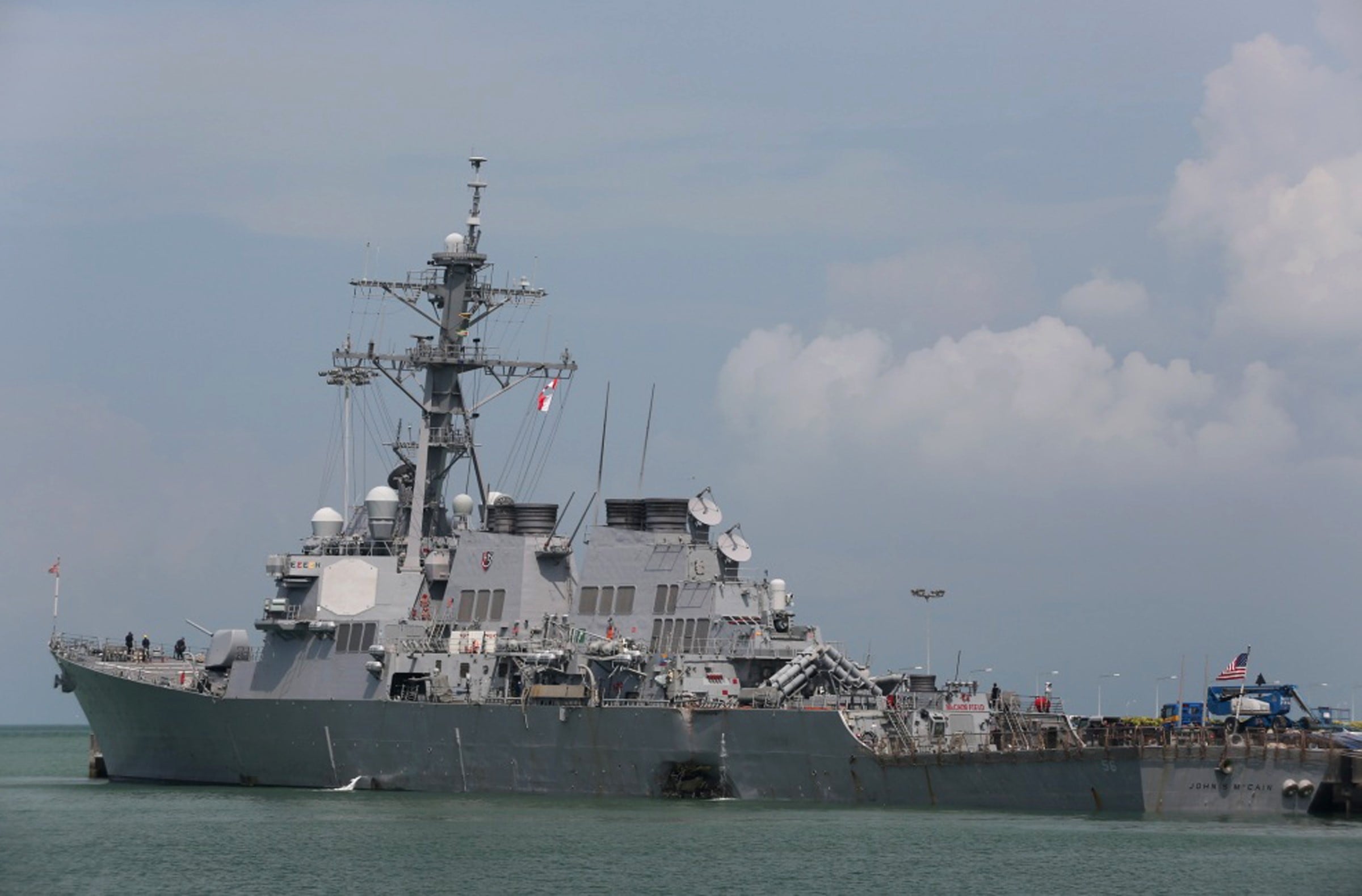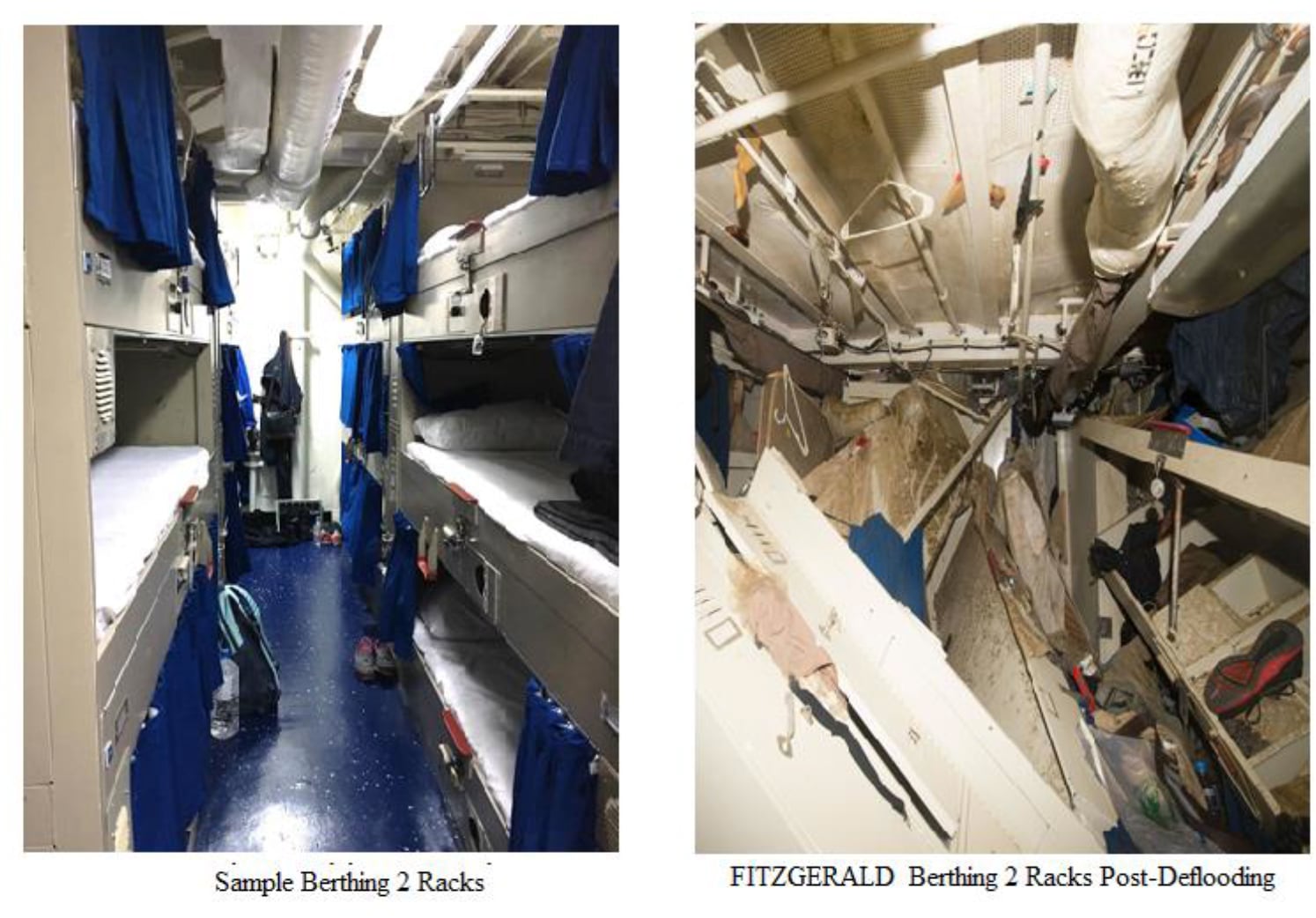The disastrous at-sea collisions involving the destroyers John S. McCain on Monday and the Fitzgerald in June offer a tragic reminder of the high-speed, high-stakes world in which 7th Fleet sailors operate while underway.
The forward deployed naval forces that call overseas ports home while comprising America’s Western Pacific power projection deal with longer deployments and lesser training while regularly operating in more complex maritime environments.
That high activity regularly involves transiting through some of the world’s busiest sea traffic.
The Fitzgerald was underway in a sea lane off the Japanese coast when it was struck by a commercial vessel in June, a collision that led to the drowning deaths of seven sailors.
The McCain was near the Strait of Malacca near Singapore on Monday when it sustained a collision with an oil barge three times its size.
As the search for 10 missing McCain sailors continued Monday, Chief of Naval Operations Adm. John Richardson announced a fleet-wide review that will include a long look at training and operational tempo, among other things.
RELATED

The McCain and Fitzgerald crews are no strangers to steaming in an area of operations that include a belligerent North Korea and an increasingly assertive Chinese navy.
Seventh fleet has 13 ships under its command, and has dozens more ships and submarines in its waters at any given time, Navy officials say.
Crews stationed overseas like those in 7th Fleet face less certainty when it comes to deployments, training and other things that are more reliable for a U.S.-based crew, according to Bryan Clark, a retired submariner and now a fellow at the Center for Strategic and Budgetary Assessments.
“You‘re underway a lot more and you don’t have that long period of preparation before you start getting underway,” Clark said. ”It’s a much more flexible schedule than the guys in the United States have, The U.S. guys have a pretty regular, predictable plan going forward.”
This puts more pressure on squadron and ship commanders to prep and train the crew, he said.
“If you’re stateside, you’re doing a long workup period as part of a strike group,” Clark said.
Clark said such stressors have increased in the last 15 years, as missions expanded but the Navy ranks have shrunk by 20 percent.
“It’s maintained the same number of ships deployed overseas,” he said. “The Navy’s working about 20 percent harder.”
Deployments have also gotten longer in the past 15 years, Clark said.
In 2000, he said, just four percent were longer than six months.
“Today, they’re all longer than six months,” Clark said. “The stress on the Navy has gone up significantly.”
To meet the demand for such ships to be stationed in the area, the Navy has extended deployments, increased ops tempo and shortened, eliminated or deferred training and maintenance, according to a 2015 Government Accountability Office report.
“The high pace of operations the Navy uses for overseas-homeported ships limits dedicated training and maintenance periods, which has resulted in difficulty keeping crews fully trained and ships maintained,” the report states.
The percentage of the fleet calling an overseas port its home has doubled since 2006, according to the GAO report.
RELATED

By the end of fiscal year 2015, about 40 vessels were expected to be forward deployed, the GAO reported.
While stationing ships overseas offers faster crisis response and a richer engagement with allies, the GAO report found that crew training and maintenance are shortened compared to ships based in the United States.
While Navy plans call for a U.S.-based cruiser or destroyer to spend 41 percent of its time deployed or available for deployments, such Japan-based ships spend 67 percent of their time deployed.
“High operational tempo for ships homeported overseas limits crew training when compared to ships homeported in the United States,” according to the report.
This results in a “train on the margins” approach for ships based overseas, according to the report.
RELATED

“U.S.-based crews are completely qualified prior to deploying from their U.S. homeports, with few exceptions,” the report states. “Training on the margins’ means that there is little to no dedicated training time set aside for the ships, so that crews train while under way or in the limited time between underway periods.”
As a result, up to 17 percent of warfare certifications for Japan-based crews have lapsed in the past. “Over three-quarters of the expired certifications in January 2015, including air warfare and electronic warfare, had been expired for 5 months or more,” the GAO reported.
One question that bears answering in Richardson’s review is whether the issues seen in 7th Fleet are a “canary in the coal mine,” Clark said.
“If you’re stressing the whole fleet, you expect these problems to emerge in the FDNF first,” Clark said.
Sometimes ships that do a lot of challenging operations, like transiting through the Strait of Malacca, end up putting the same people on watch every time, he said.
“You have a limited rotation of skilled, experienced watchstanders,” Clark said.
If they’re not available, he said, “your next best is not close to your first best.”
“Those are things you kind of look for, especially when you’re looking at ships that are highly capable,” Clark said. “(Watchstanders) may be super-proficient and highly capable, but they’re only one or two deep.”
At the same time, Clark said, structural issues within the Navy itself are likely at work as well.
“This is unusual to have this many fatal accidents in a short period of time,” he said. “It may not be just a surface fleet thing.”
Geoff is the managing editor of Military Times, but he still loves writing stories. He covered Iraq and Afghanistan extensively and was a reporter at the Chicago Tribune. He welcomes any and all kinds of tips at geoffz@militarytimes.com.




